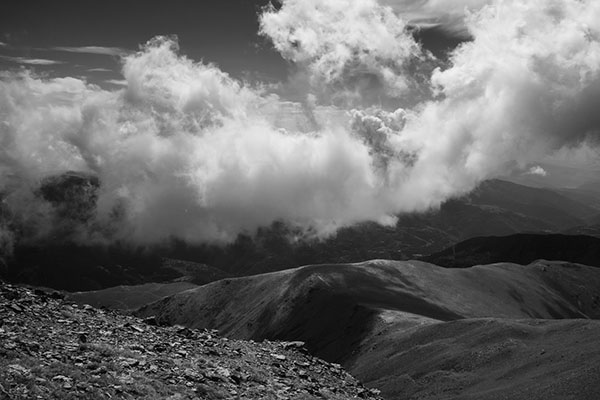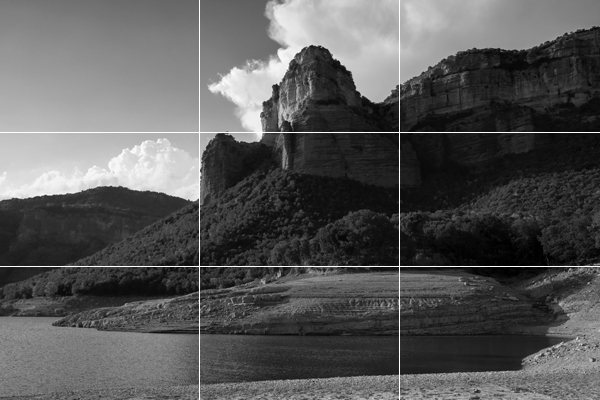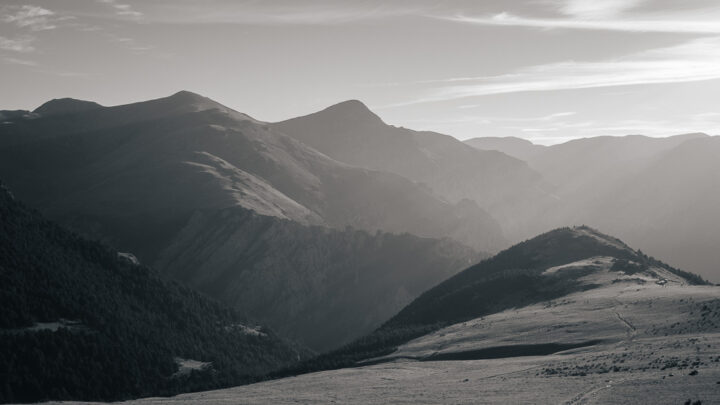Introduction
There is something incredibly magical about landscape photography. It has the potential to transport you to a different place and time and spark your imagination in ways nothing else can. Dramatic landscape photography is a type of landscape photography that seeks to capture a more intense and emotional atmosphere and can be incredibly captivating. Unveiling the secrets of dramatic landscape photography can help you take your photography to the next level.
What is Dramatic Landscape Photography?
Dramatic landscape photography is a type of landscape photography that seeks to capture a more intense and emotional atmosphere. It often involves capturing the beauty of nature in a more dramatic way, using techniques such as composition, lighting, long exposure, leading lines, and post-processing. It can also involve the use of filters, HDR, and other digital techniques to enhance the drama.
Landscape photography is an art form that can capture the beauty of nature and the wonders of the world in all its glory. By understanding these elements you can create stunning, one-of-a-kind landscape images that will draw the eye and captivate the viewer.

Composition
The composition of a photo is perhaps the most important aspect of any landscape photograph. When you’re shooting a dramatic landscape, it’s important to think about the elements in your frame and how they work together to create a balanced and interesting composition. The rule of thirds is a great way to create a visually pleasing photo and can be used to draw the eye to the key element in your shot. You can also use leading lines and other compositional techniques to create depth and draw the viewer’s attention to the main subject of your image.
Using a wide-angle lens can help to capture a more expansive view of the scene and can be a great way to emphasize the drama in the image. Using leading lines, such as roads or rivers, can also be a great compositional technique to help draw the viewer’s eye through the scene.
The Rule of Thirds
The Rule of Thirds is one of the most popular composition techniques used in landscape photography. This technique helps to create a balanced, aesthetically pleasing image by dividing the scene into thirds, both horizontally and vertically. The idea behind the Rule of Thirds is that if you divide the frame into three equal parts, the viewer’s eye will be naturally drawn to the points of intersection.

When using the Rule of Thirds, it is important to consider the placement of the horizon line. If the horizon line is placed at the top or bottom of the frame, it can create a static image. Instead, it is best to place the horizon line at one of the intersecting points to create an interesting composition. Additionally, the placement of the horizon line can also be used to emphasize the foreground or background elements.
When it comes to landscape photography, the Rule of Thirds can be used to draw attention to leading lines, such as rivers, roads, and pathways. These lines can be used to lead the viewer’s eye through the image. Other elements, such as trees, mountains, and clouds can also be placed at the intersecting points to add visual interest.
Finally, the Rule of Thirds can also be used to add balance to an image. If the foreground and background elements are evenly balanced, the image will appear more pleasing to the eye. Additionally, the Rule of Thirds can be used to create a sense of depth in the image. For example, placing a foreground element at one of the intersecting points can help to create the illusion of depth in the image.
Overall, the Rule of Thirds is an important composition technique that every landscape photographer should be aware of. Photographers can create dynamic, aesthetically pleasing images by dividing the frame into thirds and placing elements at the intersecting points.
Leading lines
Leading lines are a powerful compositional tool used in landscape photography to draw attention to a specific point or area of interest in the photo. By using leading lines, photographers can create a sense of depth and movement within a scene and emphasize the image’s main subject.
Leading lines are usually straight lines or curves that lead the viewer’s eyes to the main subject of a photo. These can be natural elements such as roads, rivers, and coastlines or man-made features like fences, walls, or buildings. Leading lines can also be created through the use of light and shadow and by manipulating the position of the camera to emphasize the lines in the scene.
When using leading lines in landscape photography, it’s essential to think about the direction and angle of the line. Leading lines should be used to draw the viewer’s attention to a specific point in the image, so it’s crucial to ensure that the leading line starts from a point of interest and leads the viewer’s eye to the main subject.
It’s also important to consider the perspective of the photo. If you’re shooting from a low angle, the leading line should be vertical, while if you’re shooting from a high angle, the leading line should be horizontal. This will help to create a sense of depth and movement in the photo.
Finally, it’s important to remember that leading lines should be used to enhance the overall composition of a photo, not to take away from it. If the leading line is too dominant, it can overwhelm the other elements in the image and detract from the overall impression of the photo.
By using leading lines in landscape photography, photographers can create a sense of depth, movement, and focus in their images. By following these tips, photographers can ensure that their leading lines work to enhance rather than detract from the overall composition of their photos.
The Power of Lighting
Lighting plays a huge role in dramatic landscape photography. The right light can really make a photograph stand out and can add a great deal of depth to the image. Natural lighting can often be the best choice for dramatic landscape photography since it can create beautiful shadows and highlights that can add a great deal of drama to the scene. Shooting at the golden hour can be a great way to get the most dramatic lighting for your images.
Using Filters and Digital Techniques
Filters and digital techniques can be a great way to add more drama to a landscape photograph. ND filters, for example, can be used to create long-exposure photographs that can add a great deal of drama to a scene. HDR (high dynamic range) photography can also be used to bring out more details in a scene and to create a more dynamic image.
Post-Processing
Post-processing is an essential part of dramatic landscape photography. You can use various editing techniques to tweak the colors, contrast, and other aspects of your image to make it look its best. You can also use post-processing to create special effects, such as HDR and panoramas, that will add extra impact to your shots. By taking the time to process your photos carefully, you can ensure that the final image looks its best and that the colors and other elements are balanced and harmonious.
With the right techniques, you can create stunning, dramatic landscape photos that will draw the eye and captivate the viewer. By understanding the elements of composition, lighting, and post-processing, you can create beautiful images that will showcase the world’s natural beauty. With dedication and practice, you can create remarkable photos that will be admired and cherished for years.
HDR in Landscape Photography
High Dynamic Range (HDR) photography has become increasingly popular in landscape photography. HDR techniques allow photographers to capture a wider range of light and color than a single exposure can capture. This results in a well-balanced image with more details and color depth.
HDR images are created by combining multiple exposures of the same scene. This can be done with a digital camera, or with a computer program. Each exposure is taken at different levels of exposure, from underexposed to overexposed. The exposures are then combined to create one image with a higher dynamic range than any of the individual exposures.
The result is an image with a greater light and color range than a single exposure can capture. This is especially useful for capturing a scene with a wide range of highlights and shadows. HDR images can also be used to reduce noise and create a more natural look.
When using HDR in landscape photography, it is important to remember to take multiple exposures of the same scene. This will ensure that all of the details of the scene are captured, and the image will have a greater range of light and color. It is also important to use a tripod to keep the camera still when taking multiple exposures. This will ensure that all of the exposures are taken from the same angle and distance.
HDR can be a great tool for landscape photography and can help to create stunning images with more depth and detail.
Use Storytelling to make great Landscape Images
Storytelling in landscape photography can be a powerful tool to captivate viewers and evoke emotion. It can be used to communicate a message, bring the viewer into the scene, and create a unique experience. Here are some tips on how to use storytelling in landscape photography.
- Start by considering the story you want to tell. What message are you trying to convey? What emotions do you want to evoke? Consider the elements of the landscape and think of ways they can be used to tell your story.
- Use composition to create a narrative. Consider the elements of the scene and how they can be used to create a story. The placement of elements, the use of lines and shapes, and the use of foreground, midground, and background can all be used to draw the viewer into the scene and tell a story.
- Use light to tell your story. The use of light can be used to create atmosphere, evoke emotion, and bring the viewer into the scene. The quality of light, from soft diffused light to dramatic light, can be used to highlight certain elements or create a mood.
- Use color to create a story. Color can be used to evoke emotion and create atmosphere. Consider the colors of the scene and how they can be used to create a unique experience.
- Tell a story with your captions. Captions can be used to explain the story and give the viewer more insight into the scene.
By using these tips, you can create powerful and engaging stories in your landscape photography. By considering the elements of the scene, using composition, light, color, and captions, you can create stories that evoke emotion and bring the viewer into the scene. So the next time you’re out shooting landscapes, think about how you can use storytelling in your images.
Conclusion
Dramatic landscape photography can be an incredibly powerful way to capture the beauty of nature. By understanding the secrets of dramatic landscape photography, you can take your photography to the next level and create stunning images that will captivate viewers. Whether you are using natural lighting, composition, filters, or digital techniques, understanding the secrets of dramatic landscape photography can help you capture amazing and emotionally powerful images.
